 PDF Compressor Pro PDF Compressor Pro SERIES EDITOR James H. Thrall, MD Radiologist-in-Chief Massachusetts General Hospital Juan M. Taveras Professor of Radiology Harvard Medical School Boston, Massachusetts OTHER VOLUMES IN Breast Imaging THE REQUISITES IN RADIOLOGY SERIES Gastrointestinal Imaging Genitourinary Radiology Musculoskeletal Imaging Neuroradiology Nuclear Medicine Pediatric Radiology Ultrasound Thoracic Radiology Vascular & Interventional Radiology PDF Compressor Pro 1600 John F. Kennedy Blvd. Ste 1800 Philadelphia, PA 19103-2899 CARDIAC IMAGING: THE REQUISITES ISBN: 978-0-323-05527-7 Copyright 2009, 2005, 1998 by Mosby, Inc., an af liate of Elsevier Inc. No part of this publication may be reproduced or transmitted in any form or by any All rights reserved. means, electronic or mechanical, including photocopying, recording, or any information storage and retrieval system, without permission in writing from the publisher. Permissions may be sought directly from Elseviers Rights Department: phone: ( 1) 215 239 3804 (US) or ( 44) 1865 843830 (UK); fax: ( 44) 1865 853333; e-mail: healthpermissions@elsevier.com.
PDF Compressor Pro PDF Compressor Pro SERIES EDITOR James H. Thrall, MD Radiologist-in-Chief Massachusetts General Hospital Juan M. Taveras Professor of Radiology Harvard Medical School Boston, Massachusetts OTHER VOLUMES IN Breast Imaging THE REQUISITES IN RADIOLOGY SERIES Gastrointestinal Imaging Genitourinary Radiology Musculoskeletal Imaging Neuroradiology Nuclear Medicine Pediatric Radiology Ultrasound Thoracic Radiology Vascular & Interventional Radiology PDF Compressor Pro 1600 John F. Kennedy Blvd. Ste 1800 Philadelphia, PA 19103-2899 CARDIAC IMAGING: THE REQUISITES ISBN: 978-0-323-05527-7 Copyright 2009, 2005, 1998 by Mosby, Inc., an af liate of Elsevier Inc. No part of this publication may be reproduced or transmitted in any form or by any All rights reserved. means, electronic or mechanical, including photocopying, recording, or any information storage and retrieval system, without permission in writing from the publisher. Permissions may be sought directly from Elseviers Rights Department: phone: ( 1) 215 239 3804 (US) or ( 44) 1865 843830 (UK); fax: ( 44) 1865 853333; e-mail: healthpermissions@elsevier.com.
You may also complete your request on-line via the Elsevier website at http://www.elsevier.com/permissions. Notice Neither the Publisher nor the Authors assume any responsibility for any loss or injury and/or damage to persons or property arising out of or related to any use of the material contained in this book. It is the responsibility of the treating practitioner, relying on independent expertise and knowledge of the patient, to determine the best treatment and method of application for the patient. The Publisher Library of Congress Cataloging-in-Publication Data Miller, Stephen W. (Stephen Wilmot), 1941 Cardiac imaging : the requisites / Stephen Wilmot Miller, Lawrence M. 3rd ed. p. ; cm. ; cm.
Includes bibliographical references and index. ISBN 978-0-323-05527-7 (alk. paper) 1. HeartImaging. I. II. II.
Abbara, Suhny. III. Title. [DNLM: 1. Heart Diseasesdiagnosis. 2.
Diagnostic Imagingmethods. 3. Heart Diseases physiopathology. WG 141 M647c 2009] RC683.5.I42M55 2009 616.120757dc22 2008046736 Rebecca S. Gaertner Acquisitions Editor: Colleen McGonigal Developmental Editor: David Saltzberg Senior Project Manager: Steve Stave Design Direction: Printed in China Last digit is the print number: PDF Compressor Pro To Christina STEPHEN WILMOT MILLER To Ruthellen LAWRENCE M. THE REQUISITES fundamental building blocks of radiology practice. THE REQUISITES fundamental building blocks of radiology practice.
This series is This reinforces the narrative discussion and the liberal use of this approaching its third decade and continues to ourish due to the approach again highlights Cardiac Imaging: THE REQUISITES. have now become old friends to two or diligence and success of the authors in producing such high qual THE REQUISITES three generations of medical imagers. We have tried to remain ity work. again exempli es Cardiac Imaging: THE REQUISITES true to the original intent of the series, which was to provide the this high standard. resident, fellow, or practicing physician with a text that might be Cardiac imaging as much as any part of medical imaging has evolved with astonishing rapidity over the past decade. Dr. Miller reasonably read within several days.
In practice, we see residents and fellows doing exactly that at the beginning of each subspe and his coauthors Drs. King, Lam, Boxt, Makaryus, Soni, Abbara, cialty rotation. The concise presentation and reasonable length Achenbach, Sena, and Santilli are to be congratulated for captur of books allows them to be read and reread ing the most important aspects of cardiac imaging and putting the THE REQUISITES several times during subsequent rotations and during preparation knowledge and information into an accessible and useful form. Some aspects of cardiac imaging are enduring. Certainly for board examinations. are not intended to be exhaustive but to knowledge of anatomy will never go out of style.
However, every THE REQUISITES provide basic conceptional, factual, and interpretative material speci c method from both the standpoint of technology and the required for clinical practice. Each book is written by nationally application of the respective technologies to cardiac disease has changed dramatically. These changes are nicely captured in this recognized authorities in the respective subspecialty areas. Each volume. author is challenged to present material in the context of todays practice of radiology rather than grafting information about new Dr. Miller has designed his book in a very logical manner.
In imaging methods onto old out-of-date material. the rst ve chapters, the important imaging methods are dis Dr. Miller and his coauthors have done an outstanding job cussed. After a presentation of the basic elements of cardiac imaging, the major technologies of echocardiography, cardiac in sustaining the philosophy of in radio THE REQUISITES magnetic resonance, cardiac angiography, and cardiac computed logy series. They have produced another truly contemporary text for cardiac imaging. Cardiac Imaging: THE will serve both radiologists and cardiologists as a Building on the discussion of the different technologies, the REQUISITES subsequent six chapters of concise and useful introduction to the subject and will also Cardiac Imaging: THE REQUISITES serve as a very manageable text for review by fellows and prac address major categories of disease, including valvular heart ticing radiologists and cardiologists. disease, ischemic heart disease, coronary CTA, pericardial and myocardial disease, congenital heart disease, and thoracic aortic disease. disease, ischemic heart disease, coronary CTA, pericardial and myocardial disease, congenital heart disease, and thoracic aortic disease.
Each of these subject areas is addressed by an expert James H. Thrall, MD with up-to-date illustrations and indications of when, where, and Radiologist-in-Chief how imaging ts into the overall management of patients with Massachusetts General Hospital known or suspected heart disease. Juan M. Taveras Professor of Radiology One of the features of series most noted THE REQUISITESHarvard Medical School and appreciated in reader feedback is the use of tables and boxes Boston, Massachusettsvii PDF Compressor Pro PDF Compressor Pro Preface This third edition of has second half of the 20th century. With the development of Cardiac Imaging: THE REQUISITES been modi ed and expanded. tidetector computed tomography (CT) for the evaluation of the heart and coronary arteries re ect the increasing clinical utilization In the latter half of the 20th century, CT and MRI were devel oped. tidetector computed tomography (CT) for the evaluation of the heart and coronary arteries re ect the increasing clinical utilization In the latter half of the 20th century, CT and MRI were devel oped.
Although developed earlier, CT was not seriously applied of these rapid noninvasive cardiac imaging modalities. Further to the problem of cardiac imaging until scanners with adequate more, much material relating to the older cardiac modalities, namely plain lm examination and angiocardiography, has been temporal and spatial resolution to stop cardiac motion and resolve stenosis in the epicardial coronary arteries could be produced. combined with discussion of the newer modalities. In this way, CT evaluation of the heart has rapidly become one of the most we feel we have produced an integrated textbook of practical exciting areas of clinical practice and investigation in cardiac cross-modality cardiac imaging. As with the previous two editions, our emphasis is on the visualization and characterization of the medicine. MRI, too, is changing the way we image the heart.
Next page

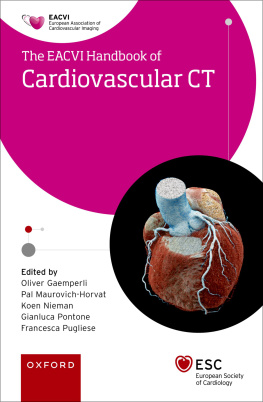
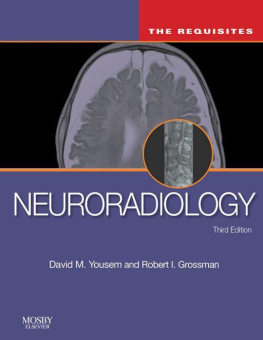
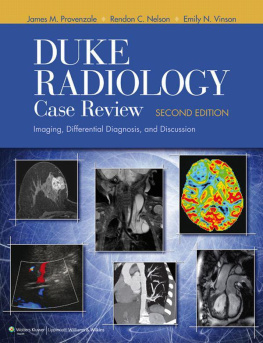
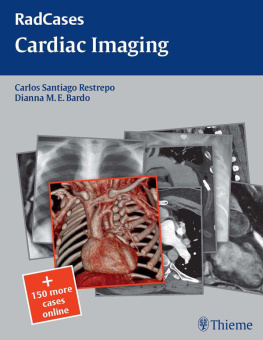
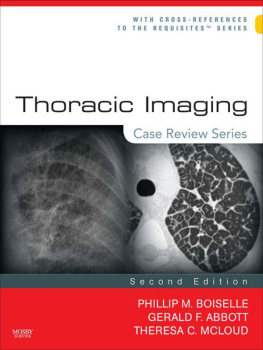
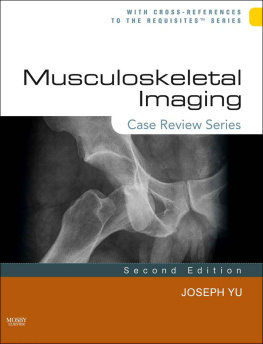
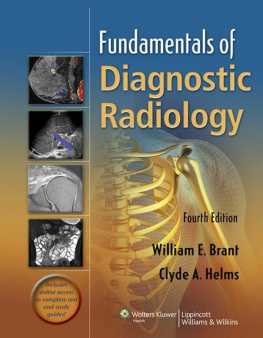
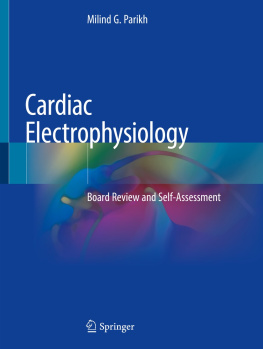
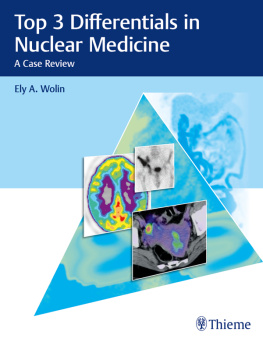
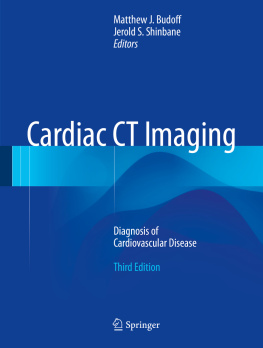
 PDF Compressor Pro PDF Compressor Pro SERIES EDITOR James H. Thrall, MD Radiologist-in-Chief Massachusetts General Hospital Juan M. Taveras Professor of Radiology Harvard Medical School Boston, Massachusetts OTHER VOLUMES IN Breast Imaging THE REQUISITES IN RADIOLOGY SERIES Gastrointestinal Imaging Genitourinary Radiology Musculoskeletal Imaging Neuroradiology Nuclear Medicine Pediatric Radiology Ultrasound Thoracic Radiology Vascular & Interventional Radiology PDF Compressor Pro 1600 John F. Kennedy Blvd. Ste 1800 Philadelphia, PA 19103-2899 CARDIAC IMAGING: THE REQUISITES ISBN: 978-0-323-05527-7 Copyright 2009, 2005, 1998 by Mosby, Inc., an af liate of Elsevier Inc. No part of this publication may be reproduced or transmitted in any form or by any All rights reserved. means, electronic or mechanical, including photocopying, recording, or any information storage and retrieval system, without permission in writing from the publisher. Permissions may be sought directly from Elseviers Rights Department: phone: ( 1) 215 239 3804 (US) or ( 44) 1865 843830 (UK); fax: ( 44) 1865 853333; e-mail: healthpermissions@elsevier.com.
PDF Compressor Pro PDF Compressor Pro SERIES EDITOR James H. Thrall, MD Radiologist-in-Chief Massachusetts General Hospital Juan M. Taveras Professor of Radiology Harvard Medical School Boston, Massachusetts OTHER VOLUMES IN Breast Imaging THE REQUISITES IN RADIOLOGY SERIES Gastrointestinal Imaging Genitourinary Radiology Musculoskeletal Imaging Neuroradiology Nuclear Medicine Pediatric Radiology Ultrasound Thoracic Radiology Vascular & Interventional Radiology PDF Compressor Pro 1600 John F. Kennedy Blvd. Ste 1800 Philadelphia, PA 19103-2899 CARDIAC IMAGING: THE REQUISITES ISBN: 978-0-323-05527-7 Copyright 2009, 2005, 1998 by Mosby, Inc., an af liate of Elsevier Inc. No part of this publication may be reproduced or transmitted in any form or by any All rights reserved. means, electronic or mechanical, including photocopying, recording, or any information storage and retrieval system, without permission in writing from the publisher. Permissions may be sought directly from Elseviers Rights Department: phone: ( 1) 215 239 3804 (US) or ( 44) 1865 843830 (UK); fax: ( 44) 1865 853333; e-mail: healthpermissions@elsevier.com.